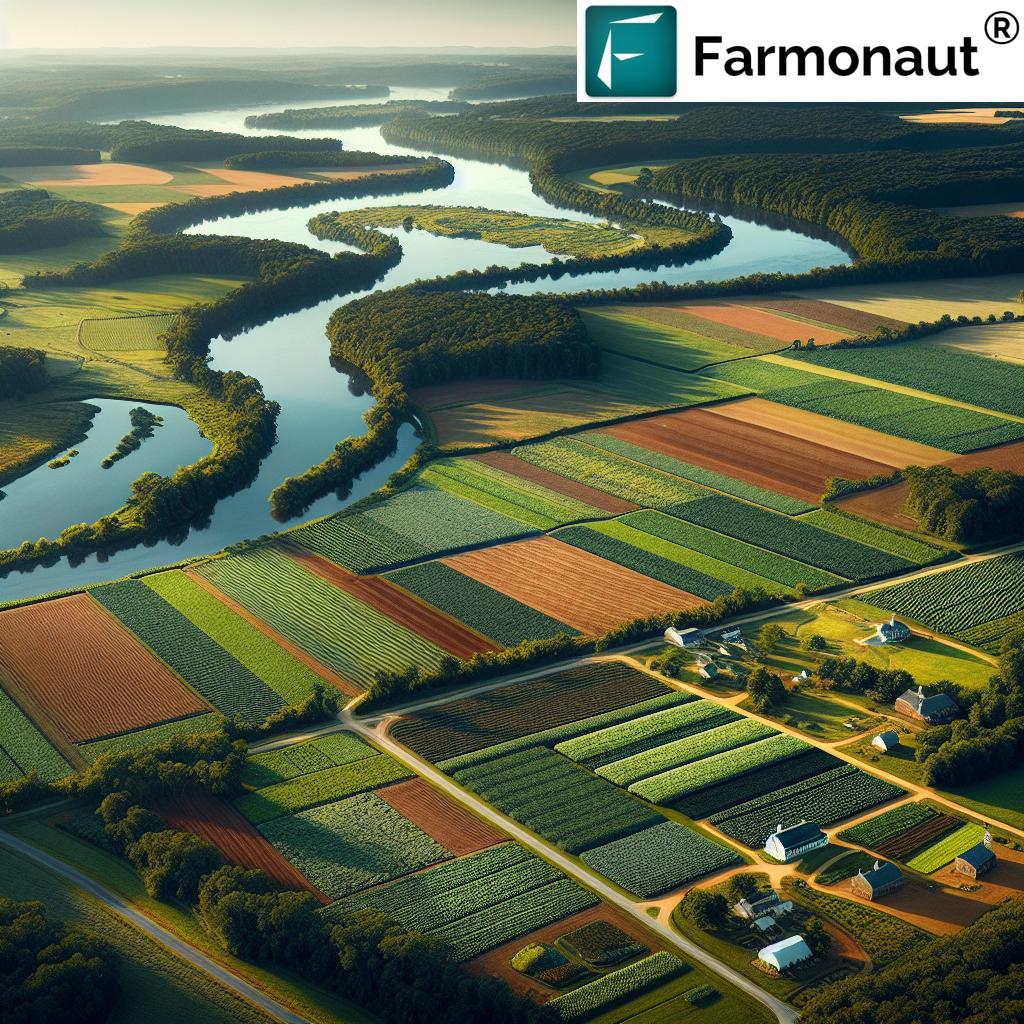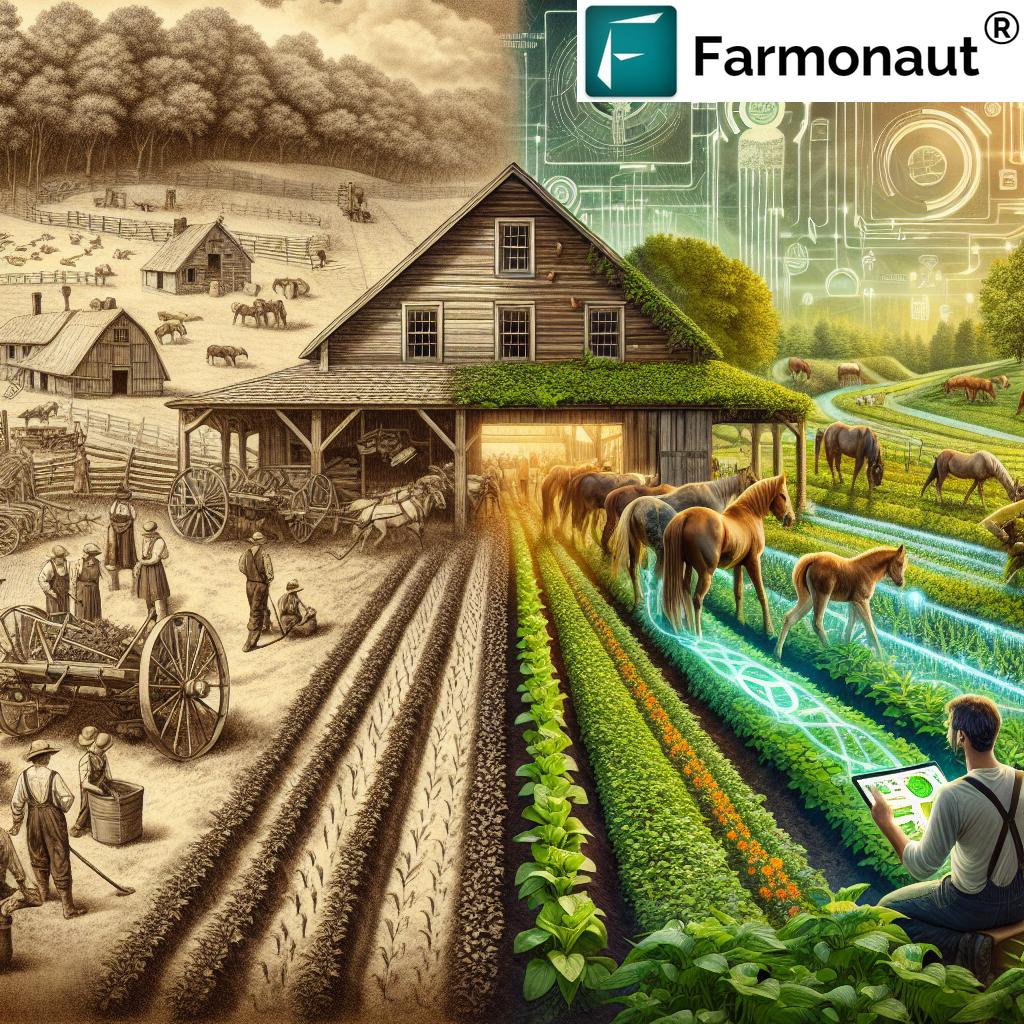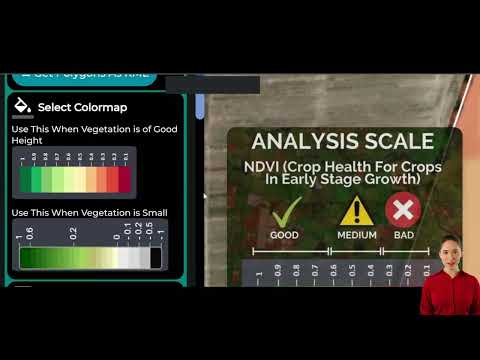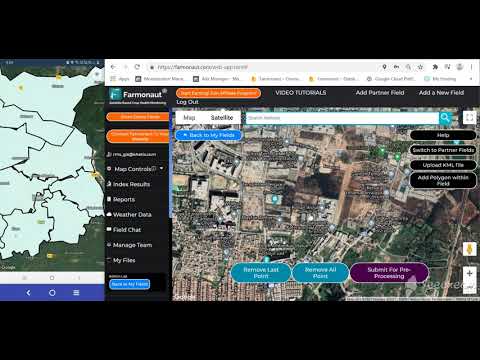Preserving Virginia’s Legacy: How Agricultural Land Conservation Safeguards Historic Farmland and Sustainable Agriculture
“Virginia’s recent Agricultural Land Easement protected 568 acres of prime farmland along the Pamunkey River, preserving historic and ecological resources.”
In the heart of Virginia, a remarkable story of conservation and heritage preservation unfolds. We are witnessing a pivotal moment in the state’s history as significant efforts are being made to safeguard its rich agricultural legacy. Today, we’ll explore the fascinating journey of agricultural land conservation in Virginia, focusing on a recent triumph that has captured the attention of conservationists, farmers, and history enthusiasts alike.
The Capital Region Land Conservancy (CRLC) has recently completed a monumental task: the protection of approximately 568 acres of prime farmland known as Rockahock. This land, nestled along the picturesque Pamunkey River in New Kent County, Virginia, is not just any ordinary plot. It’s a piece of American history, intricately tied to the legacy of Martha Washington, the wife of the first President of the United States, George Washington.
The Historical Significance of Rockahock
Rockahock’s history is as rich as its soil. The property is believed to have once been part of the vast estate owned by Daniel Parke Custis, Martha Washington’s first husband. This connection to America’s founding family adds an invaluable layer of historical importance to the land. However, like many properties in the region, Rockahock’s story is also intertwined with the tumultuous events of the Civil War, during which it was lost to Union forces.
The preservation of such historically significant land is crucial not only for maintaining our connection to the past but also for understanding the agricultural practices that have shaped our nation. By protecting Rockahock, we’re not just saving farmland; we’re preserving a living piece of American history.
The Conservation Journey
The road to preserving Rockahock has been a long one. The CRLC began its efforts to protect this land back in 2017, a testament to the time and dedication required for such significant conservation projects. The process was officially completed following the death of the previous owner, Roberta Runion, in 2021.
What makes this conservation effort particularly noteworthy is the scale of funding involved. A $2.6 million grant from the U.S. Department of Agriculture’s Natural Resource Conservation Services made this project possible. This represents the largest single award for farmland conservation in Virginia’s history, underscoring the importance placed on preserving this land.

The Ecological Value of Rockahock
While the historical significance of Rockahock is undeniable, its ecological value is equally impressive. The property boasts about 362 acres of USDA-designated prime soils, including 228 acres of the highly prized Pamunkey soil. This soil composition makes Rockahock an agricultural gem, capable of supporting diverse and productive farming activities.
But the land’s value extends beyond its agricultural potential. Rockahock is home to a variety of wildlife, including several endangered fish species and imperiled plant species. This biodiversity adds another layer of importance to the conservation effort, as protecting this land also means safeguarding critical habitats for these vulnerable species.
The Pamunkey River: A Historic Waterway
One of the most striking features of Rockahock is its extensive frontage along the Pamunkey River. With over 2.5 miles of river frontage, this property plays a crucial role in protecting this historic waterway. The Pamunkey River is part of the National Park Service’s Captain John Smith Chesapeake National Historic Trail, a route that traces the historic voyages of notable figures such as John Smith and George Washington.
By preserving the land along this river, we’re not only protecting a vital water resource but also maintaining the integrity of a nationally recognized historic trail. This conservation effort helps ensure that future generations can experience the same landscapes that shaped our nation’s early history.
The Challenges of Rapid Development
The preservation of Rockahock comes at a critical time for New Kent County. Like many areas in Virginia, this region has been experiencing rapid growth and development. Over the last 40 years, New Kent County has seen a staggering 208% increase in population. This growth has put immense pressure on the county’s farmland, resulting in a 28% decrease in agricultural areas.
The threat to Rockahock was very real. Projections suggested that by 2029, the property had a moderate likelihood of being developed, with a rating between 11 to 50 on a scale of 100. By securing this land through an Agricultural Land Easement, we’ve ensured that this prime farmland will remain agricultural, resisting the pressures of urbanization and development.
The Role of Sustainable Agriculture Practices
“Sustainable agriculture practices and precision farming technologies play a crucial role in maintaining soil quality across thousands of acres.”
Preserving farmland is only part of the equation. To truly safeguard our agricultural heritage and ensure food security for future generations, we must also focus on sustainable farming practices. This is where modern agricultural technologies come into play, and companies like Farmonaut are leading the charge.
Farmonaut offers advanced, satellite-based farm management solutions that are revolutionizing the way we approach agriculture. Through their web and mobile applications, farmers can access real-time data on crop health, soil moisture levels, and other critical metrics. This information allows for more precise decision-making in areas such as irrigation, fertilizer usage, and pest management.

By implementing these precision farming technologies, we can ensure that protected lands like Rockahock are not only preserved but also used in the most efficient and sustainable manner possible. This approach helps maintain soil quality, reduce resource wastage, and optimize crop yields – all crucial factors in the long-term viability of our farmlands.
The Importance of Agricultural Land Use Planning
As we face the challenges of balancing development with farmland preservation, effective agricultural land use planning becomes increasingly crucial. Remote sensing technologies, such as those employed by Farmonaut, play a vital role in this planning process.
Through satellite imagery and advanced data analysis, we can gain a comprehensive understanding of land use patterns, soil health, and crop productivity across large areas. This information is invaluable for policymakers, conservationists, and farmers alike, allowing for more informed decisions about land use and conservation efforts.
The Future of Farmland Conservation in Virginia
The successful conservation of Rockahock is a significant milestone, but it’s just one step in a larger journey. The CRLC and other conservation organizations continue to work tirelessly to protect Virginia’s valuable farmland and natural resources.
Recently, the CRLC announced the protection of approximately 10 acres of green space along Pocosham Creek in Richmond. This project, while smaller in scale than Rockahock, demonstrates the ongoing commitment to preserving green spaces and enhancing public accessibility to natural areas.
As we look to the future, it’s clear that the integration of traditional conservation methods with modern agricultural technologies will be key to preserving our farmlands while ensuring their productivity and sustainability.
The Role of Crop Monitoring Systems in Conservation
One of the most promising developments in the field of agricultural conservation is the use of advanced crop monitoring systems. These systems, like those offered by Farmonaut, provide farmers with unprecedented insights into their crops’ health and development.
By utilizing satellite imagery and artificial intelligence, Farmonaut’s platform can detect early signs of crop stress, pest infestations, or nutrient deficiencies. This early detection allows farmers to take prompt action, potentially saving crops and reducing the need for harmful pesticides or excessive fertilizer use.

For conserved lands like Rockahock, these monitoring systems can play a crucial role in ensuring that the land remains productive and healthy for generations to come. By optimizing resource use and minimizing environmental impact, we can strike a balance between agricultural productivity and conservation goals.
The Impact of Farm Management Software
In addition to crop monitoring, farm management software is becoming an indispensable tool for modern farmers. These digital platforms help streamline operations, track resources, and make data-driven decisions.
Farmonaut’s farm management tools go beyond simple record-keeping. Their AI-driven advisory system, Jeevn AI, provides personalized recommendations based on real-time data and expert knowledge. This can help farmers on conserved lands like Rockahock optimize their practices for both productivity and sustainability.

Soil Quality Management: A Key to Sustainable Agriculture
One of the most critical aspects of farmland conservation is maintaining and improving soil quality. The rich Pamunkey soil found on the Rockahock property is a prime example of why soil conservation is so important.
Modern agricultural technologies can play a significant role in soil quality management. For instance, Farmonaut’s satellite-based monitoring can provide insights into soil moisture levels and nutrient content. This information allows farmers to make precise decisions about irrigation and fertilization, helping to maintain optimal soil health.
The Role of Agricultural Easements in Land Conservation
The conservation of Rockahock was made possible through an Agricultural Land Easement. These easements are powerful tools in the fight to preserve farmland and natural habitats. But what exactly is an agricultural easement?
An agricultural easement is a voluntary legal agreement between a landowner and a land trust or government agency. The easement permanently limits uses of the land to protect its conservation values. In the case of Rockahock, this means the land will remain available for farming and will be protected from development.
These easements are crucial in areas facing rapid development, like New Kent County. They provide a way for landowners to preserve their property’s agricultural use while potentially benefiting from tax incentives and the satisfaction of knowing their land will be protected for future generations.
The Economic Benefits of Farmland Conservation
While the environmental and historical benefits of farmland conservation are clear, it’s also important to consider the economic impact. Preserving agricultural land can have significant positive effects on local economies.
Farms contribute to the local economy through direct sales of produce, employment opportunities, and support for related industries. Additionally, preserved farmland can boost tourism, especially when it has historical significance like Rockahock.
Furthermore, the use of precision farming technologies can increase the economic viability of farms. By optimizing resource use and improving crop yields, farmers can potentially increase their profitability while reducing their environmental impact.
The Future of Agriculture: Balancing Technology and Tradition
As we look to the future of agriculture, it’s clear that a balance between traditional farming wisdom and modern technology will be crucial. The conservation of historic farmlands like Rockahock provides us with a unique opportunity to bridge this gap.
By applying advanced technologies like those offered by Farmonaut to these preserved lands, we can honor their historical significance while ensuring their continued productivity and sustainability. This approach allows us to learn from the past while embracing the innovations of the future.
The Role of Community in Farmland Conservation
The success of conservation efforts like those at Rockahock relies heavily on community support and involvement. Local communities play a crucial role in advocating for conservation, supporting sustainable farming practices, and maintaining the cultural heritage associated with these lands.
Educational programs and community outreach initiatives can help raise awareness about the importance of farmland conservation. By engaging with local schools, community groups, and farmers’ markets, we can foster a deeper appreciation for our agricultural heritage and the role it plays in our daily lives.
The Global Context: Food Security and Climate Change
While our focus has been on Virginia, it’s important to remember that farmland conservation is a global issue. As the world population continues to grow and climate change threatens agricultural productivity in many regions, preserving prime farmland becomes increasingly crucial for global food security.
The conservation efforts at Rockahock and the use of sustainable farming technologies contribute to this larger goal. By protecting productive farmland and optimizing its use through precision agriculture, we can help ensure a stable food supply for future generations.
Comparative Analysis of Agricultural Land Conservation Benefits
| Conservation Aspect | Without Conservation | With Conservation |
|---|---|---|
| Farmland Acreage | Decreasing trend (-28% in New Kent County) | Stable or increasing (568 acres protected at Rockahock) |
| Biodiversity | Declining due to habitat loss | Protected habitats for endangered species and native plants |
| Soil Quality | At risk of degradation from intensive farming or development | Maintained through sustainable practices and precision farming |
| Endangered Species Habitat | Fragmented and diminishing | 2.5 miles of river frontage protected for aquatic species |
| Sustainable Agriculture Practices | Limited implementation due to economic pressures | Encouraged and supported through conservation agreements |
The Role of Technology in Large-Scale Field Mapping
As we continue to protect larger tracts of farmland, the need for efficient large-scale field mapping becomes increasingly important. This is where technologies like those offered by Farmonaut truly shine.
Satellite-based mapping allows for quick and accurate assessment of large areas, providing valuable data on land use, crop health, and environmental factors. This information is crucial for both conservation planning and efficient farm management.
The Future of Agricultural Land Use Planning
As we look to the future, it’s clear that agricultural land use planning will need to become more sophisticated and data-driven. The challenges of climate change, population growth, and urban expansion require us to make informed decisions about how we use our limited land resources.
Technologies like those offered by Farmonaut, including their API and developer documentation, provide the tools needed for this level of planning. By integrating satellite data, weather information, and AI-driven analysis, we can create comprehensive land use plans that balance conservation, agriculture, and development needs.
Conclusion: A Legacy Preserved, A Future Secured
The conservation of Rockahock represents more than just the protection of 568 acres of farmland. It’s a testament to our commitment to preserving our historical legacy, protecting our natural resources, and ensuring a sustainable future for agriculture.
By combining traditional conservation methods with cutting-edge agricultural technologies, we’re not just preserving land – we’re creating a blueprint for sustainable agriculture in the 21st century. The story of Rockahock serves as an inspiration and a model for future conservation efforts, not just in Virginia, but across the nation and beyond.
As we move forward, let’s continue to support and champion these crucial conservation efforts. Whether it’s through advocating for farmland preservation, supporting sustainable farming practices, or utilizing advanced agricultural technologies, each of us has a role to play in securing a sustainable and productive future for our farmlands.

FAQ Section
- What is an Agricultural Land Easement?
An Agricultural Land Easement is a voluntary legal agreement that permanently limits uses of the land to protect its conservation values, specifically for agricultural use. - Why is the conservation of Rockahock significant?
Rockahock’s conservation is significant due to its historical connection to Martha Washington, its prime agricultural soil, and its ecological value as habitat for endangered species. - How does precision farming technology contribute to farmland conservation?
Precision farming technologies, like those offered by Farmonaut, help optimize resource use, improve crop yields, and maintain soil health, all of which contribute to sustainable land use and conservation. - What role does satellite imagery play in agricultural land conservation?
Satellite imagery provides valuable data on crop health, soil moisture, and land use patterns, helping in both conservation planning and efficient farm management. - How can individuals support farmland conservation efforts?
Individuals can support farmland conservation by advocating for preservation policies, supporting local farms, and educating themselves and others about the importance of agricultural land.



